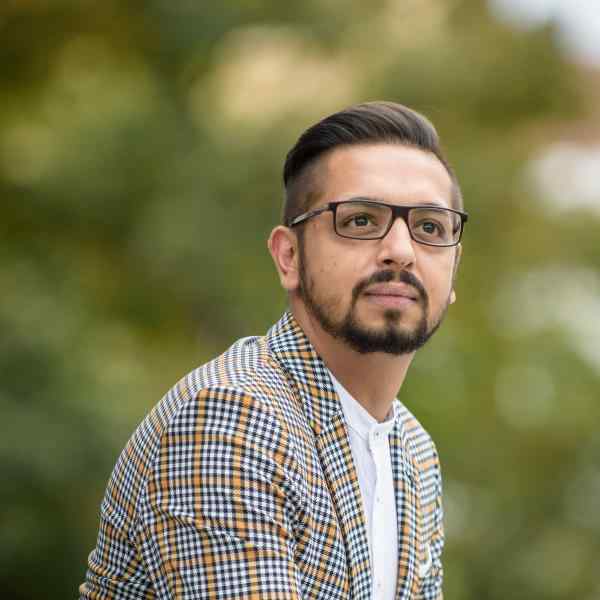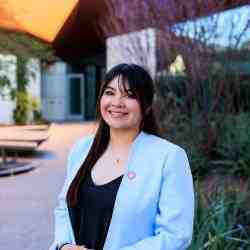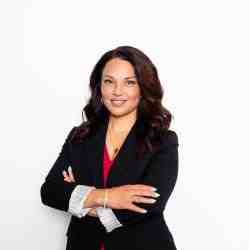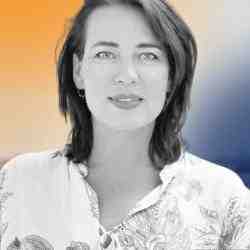Introduction
David recognizes the diversity within the Roma community, which has historically faced centuries of discrimination. Non-Roma individuals typically lead efforts in addressing Roma issues, focusing on the most vulnerable. David seeks to change this narrative by targeting middle-class Roma individuals, aiming to shift perceptions and highlight their varied roles as artists, professionals, and contributors to society.
The New Idea
David has found the wider Roma community is diverse and comprises various subgroups with different identities and needs. Overall, this community has been subject to centuries-long discrimination; in Europe in particular, discrimination against Romani people is largely influenced by pervasive stereotypes that Roma people are poor people, which contributes to and is reinforced by exclusion and segregation of the Roma population. Consequently, most of the work on Roma issues is led by non-Roma people and focused on the most vulnerable. David changes this by enabling cultural spaces that feature Roma in non-stereotypical ways and celebrate the diverse identities of the Roma population, changing the perception of what it means to be Roma.
Additionally, prejudices against the Roma population lead many middle-class Roma to hide their Roma identity to avoid this discrimination, therefore contributing to the stereotype through their lack of visibility. David realized that to shift the dominant and distorted perception of Roma people, he needed to focus on middle-class Roma, who make up a sizable portion of the Roma community in the Czech Republic and who are differently positioned in society to help change the general narrative and stereotypes of Roma people.
David activates the potential for Roma to be more visible in all their varied identities (with a special focus on LGBTQI identities) and so his work highlights Roma people as artists, professionals, and contributors and equips key Roma leaders to more effectively address discrimination, thus charting a path to a future where Roma are seen and included in their many various identities.
David’s idea leans much more toward influencing key leaders within the Roma community and creating a multiplier effect on both the Roma communities and society at large. His efforts have been instrumental in ensuring the representation and recognition of the Roma minority in official government strategies, leading him to advocate for new state funds specifically aimed at addressing the needs and concerns of the Roma community. David’s work also extends to a European level aiming to influence the EU’s call for national-level policies on the integration of Romani communities in the Member States such that these policies reflect the needs of the diverse composition of the groups representing the population of Roma.
The Problem
Until the mid-20th century, the Roma community was the biggest ethnic minority in Europe, their settlements spanning the whole continent. Having their origins in India, they migrated to Europe through Iran, Turkey, and the Balkans, adopting various traditions on the way. Due to their distinct culture (a new rhythm in music, unique clothing, nomadic living style, and different languages) and skin color, they were immediately discriminated against, and enslaved by European communities. After the Jews, Romani were the biggest group to suffer from the Nazi genocide. A large part of the newly emerging Romani middle class and intellectuals were killed during this era. Due to the lack of written tradition and literacy in this group, their experience of the Holocaust was often overseen or unrecognized.
There are an estimated 20-30 million Roma living all across the world (especially in Europe, the United States, and Brazil) at the moment, suffering from the effects of systemic racism. According to Eurobarometer, the most widespread form of discrimination in the Czech Republic is Roma origin (62%) and the 4th and 5th most common forms are sexual orientation (34%) and gender identity (23%). In welfare states, Roma are often seen as burdens who are in need of constant help from the non-Roma community. Their access to education and health services, as well as formal employment, is very limited. In the Czech Republic, there are 250,000 Romani (according to the state data), constituting 2% of the population. However, there hasn’t been a Roma MP in the parliament since 2015. Only 1/3 of this Roma population is considered to be living in poverty, meaning that there are 160,000 Roma belonging to the middle class but who are still not accessing the public space like the non-Roma middle class. They are not represented at events, conferences, or gatherings.
Prejudice and discrimination against Roma still continue in Europe. Schools, hospitals, and police stations continue to discriminate against Romani, resulting in high incarceration rates within the community, high school dropout rates, and continuation of health issues.
The idea of “unemployed, needy, lazy Roma” is reinforced through the lack of Roma representation in the public space. The Roma community in general has no accumulated wealth, meaning that the current generation cannot inherit any resources or networks from their ancestors in certain fields including policymaking, leadership, and management. There are structural barriers to accessing funding for new initiatives or civil society organizations, especially those created by and for Roma. No laws or regulations force decision-makers to have representation from all ethnic identities in their working teams, resulting in Roma not being part of the solutions. There are still significant information gaps about this community, especially regarding public data.
The Strategy
David’s strategy has four primary fronts: 1) the use of cultural opportunities to highlight Roma contributions, 2) leadership development with Roma NGOs, 3) advocacy, including the unleashing of national and European resources for Roma integration, and 4) partnering with public sector institutions to train their employees for better awareness about the Roma population beyond the stereotypes.
Art is a field in which many Roma individuals have achieved success and where many are already openly Roma. As David’s goal is visibility, artists can easily become well-known personalities, and he understands that a shared cultural experience opens a way for people to emotionally connect before they can intellectually confront bias and discrimination. David positions Roma artists on national stages (television, festivals, Pride community events, etc.) so that they become visible, which helps achieve two goals: 1) other middle-class Roma start to feel proud of their Roma identity, and 2) the general public starts to see Roma not just as poor people who need help. David’s organization acts as a sort of agency for Roma artists to ensure their presence on these national stages. They host an annual event with undiscovered artists, and they maintain a database of Roma artists so that they can contact the organizers of national events to suggest artists to include.
Simultaneously, David and his team host a leadership academy for Roma NGO leaders so that those already at the forefront of issues of Roma integration can apply their leadership more effectively in local and European organizations to address discriminatory practices and policies. Through the academy, leaders develop their self-confidence—working through the shame associated with being Roma—as well as their skills in fundraising and organizational leadership. The academy intentionally engages a diversity of leaders (women, LGBTQI, etc.) so that they also become equipped to uphold values of diversity within their own Roma community where homophobia and sexism are common.
In the first two years, 50 Roma leaders successfully graduated from the academy. David’s team strategically selects high-potential leaders who can be multipliers of the vision. This achievement has had a profound impact, leading to many participants securing significant positions within the state system, particularly in roles focused on addressing the challenges of Roma integration. Central to this success has been David's exceptional leadership. Under his guidance, these graduates have been able to advocate for and secure new state funding that is specifically dedicated to strengthening the capacities of Roma NGOs, when most of the funding previously was going only to organizations addressing poverty in the Roma community. This funding has been a game-changer for other Roma organizations and leaders who were previously struggling due to limited financial support, which was primarily directed towards issues of exclusion and poverty. David's approach is transformative, as he actively works towards involving the Roma middle class and integrating them into society as active citizens. This inclusive approach has far-reaching effects, bringing about positive change at a systemic level. One significant outcome of the collective efforts of Roma leaders, inspired and guided by David and his team, was the establishment of a key role in the state system in Czechia – the Government Commissioner for Roma Minorities – in 2022, which is responsible for the coordination of integration policies on a national level. Prior to this role, the Roma agenda was fragmented among various state administration bodies.
Third, David works at the national and European levels to unleash new resources for Roma integration. His core strategy involves building bridges between Roma issues and advocacy around other marginalized identities also present in the Roma community. In particular, David has focused on the LGBTQI movement where there has been considerable momentum in Europe. Building a common cause with the LGBTQI movement has served to both make visible LGBTQI Roma (another non-stereotypical Roma identity) and tackle the double discrimination experienced by LGBTQI Roma—homophobia in the Roma community and Romaphobia in the LGBTQI community. David has created new resources for LGBTQI Roma organizations by successfully advocating for LGBTQI issues to be added to the national strategy for Roma integration and Roma issues to be added to the national strategy for LGBTQI integration.
David is also helping key Roma regional leaders and well-known national artists to embrace their sexual orientation, while building a movement of remarkable Roma people from different sectors who embrace new values of tolerance and solidarity and are seen by wider society as contributors. This also helps change the belief that many young Roma have that they can be successful only by pursuing certain Roma-specific token roles – e.g., the Roma character in a play or movie, a musician that plays only traditional Roma music, or the Roma representative to a meeting.
Finally, David’s organization educates state officers about the unique cultural, historical, and social experiences of Roma people, making it easier for them to provide more appropriate and effective services. By learning about the cultural specifics of Roma people, state officers have been able to develop a deeper understanding of the needs and challenges faced by Roma individuals and have been better equipped to provide services that are more culturally sensitive and responsive to the diversity of the Roma community. This initiative has reached 8.000 participants so far and has received official recognition from the Ministry of Social Affairs and is now recommended to all social workers in Czechia. In turn, thanks to this initiative David has improved access to essential services such as healthcare, education, and employment, making it easier for Roma individuals to lead healthy and fulfilling lives, and importantly, because public sector officials have developed a greater sense of empathy and respect for Roma culture and identity, Roma individuals feel a sense of belonging in society when meeting them.
David has established himself and his work in the Czech Republic and become known across Europe as a leader in this field over the last ten years, such that he is now positioned to scale across Europe. The public conversation about diverse identities and the ways in which people of those identities have been systematically discriminated against grows. Particularly as the LGBTQI community makes headway toward more equitable treatment, it presents an opportunity to connect the Roma conversation to that growing change.
David is scaling in two ways. He is working through the Roma diaspora community to spread his model to other countries, identifying and giving them the vision, the tools and the confidence to use their platforms for the good of all and to play a more active role in local and European organizations to bring to light discriminatory practices and solutions. They have opened a branch of AraArt in Slovakia, and he has a network of leaders across Europe.
Second, he is working at the EU level to advocate for policy changes for better inclusion of the Roma population, particularly by joining forces with the growing LGBTQI movement. He already partnered with the European Commission to run a research study on the status of the Roma LGBTQI minority from the perspective of state policies in three EU Member States: Czech Republic, Hungary, and Slovakia, and is now working in partnership with ERGO (European Roma Grassroots Organization) and ILGA Europe (an umbrella association for LGBTQI+ organizations in Europe) to incorporate the research insights into a collective European Advocacy Platform to advocate for new financial resources for addressing discrimination against marginalized populations. At the moment, most grants to support work with Romani citizens do not allow an approach that accounts for multiple levels of discrimination because the systems in place do not account for these multiple levels (e.g. in the judicial system, you have to decide if you’re claiming discrimination based on being Roma or being gay or female or some other form of discrimination, you cannot claim multiple).
Beyond this project, it is very important for David to bring this approach to politicians, policy makers and established networks that are working for human rights. He’s met multiple times with key figures such as EU Commissioners, members of the Council of Europe, and also played a key role in conferences and decision-making mechanisms focused on connected topics.
The Person
David, the first in his extended family of over 300 members to attend university, emerged as a groundbreaking figure within the Roma community. Growing up in a working-class household, he developed a keen awareness of social issues, influenced by his parents' encouragement to champion the rights of the oppressed. Throughout high school, David honed his activism, collaborating with local NGOs and journalists to expose discrimination against Romani individuals in various settings.
In the face of threats from skinheads during the 1990s, David remained steadfast in his commitment to fighting injustice. Upon entering university in Prague, he explored Roma history and discovered his passion for acting. In 2008, responding to the surge of extremist protests in the Czech Republic disseminating hate speech against the Roma community, David, an openly gay individual and the first LGBT Roma activist, founded "The Romani Colored Panthers" with fellow theatre friends.
Undeterred by the reluctance of existing Roma NGOs to address the issues at hand, David transformed his initiative into Ara Art, a nonprofit organization. As a social entrepreneur, his vision extends beyond the confines of traditional activism. David is dedicated to fighting against racism and xenophobia, aspiring to create a more empathetic world. His public profile as a Roma and gay individual underscores a unique perspective, shaping a new strategy and approach in the realm of social entrepreneurship, where his identity serves as a catalyst for innovative change.




